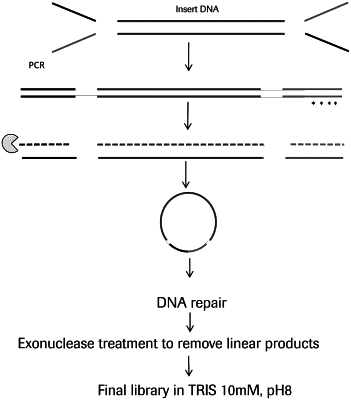| CPC C12Q 1/6806 (2013.01) [C12Q 1/6869 (2013.01); C12Q 2521/319 (2013.01); C12Q 2525/155 (2013.01); C12Q 2525/191 (2013.01); C12Q 2525/307 (2013.01); C12Q 2535/122 (2013.01)] | 11 Claims |

|
1. A method of separately sequencing each strand of a double-stranded target nucleic acid, wherein the method comprises the following steps:
(a) in a reaction mixture, joining a double-stranded target nucleic acid to an adaptor to form an adapted target nucleic acid, wherein the adaptor comprises primer-binding sites, and wherein the adaptor does not consist of a long strand and a short strand;
(b) amplifying the adapted target nucleic acid with a pair of primers, wherein the pair of primers are complementary to the primer-binding sites, thereby forming an amplicon, wherein one primer in the pair of primers comprises a modified nucleotide affecting a rate of digestion by an exonuclease;
(c) contacting the reaction mixture with an exonuclease, thereby eliminating from the reaction mixture the first of the two complementary strands of the amplicon;
(d) circularizing the second of the two complementary strands of the amplicon to form a single stranded circle;
(e) annealing a sequencing primer to the single-stranded circle; and
(f) extending the primer, thereby sequencing one strand of the target nucleic acid.
|